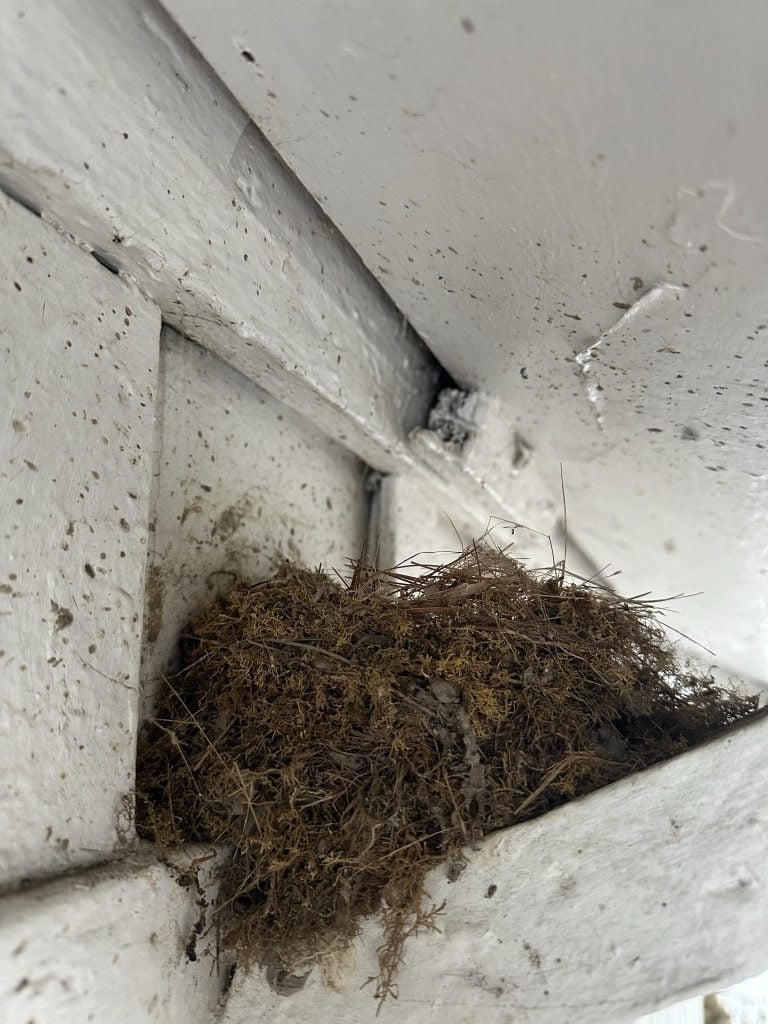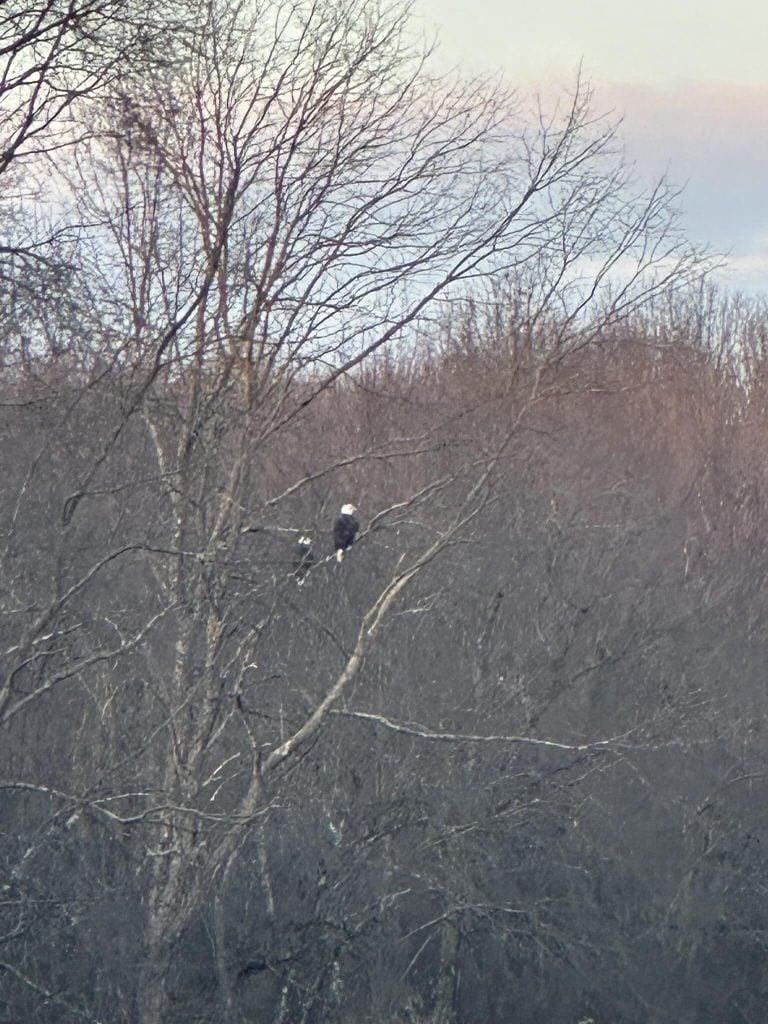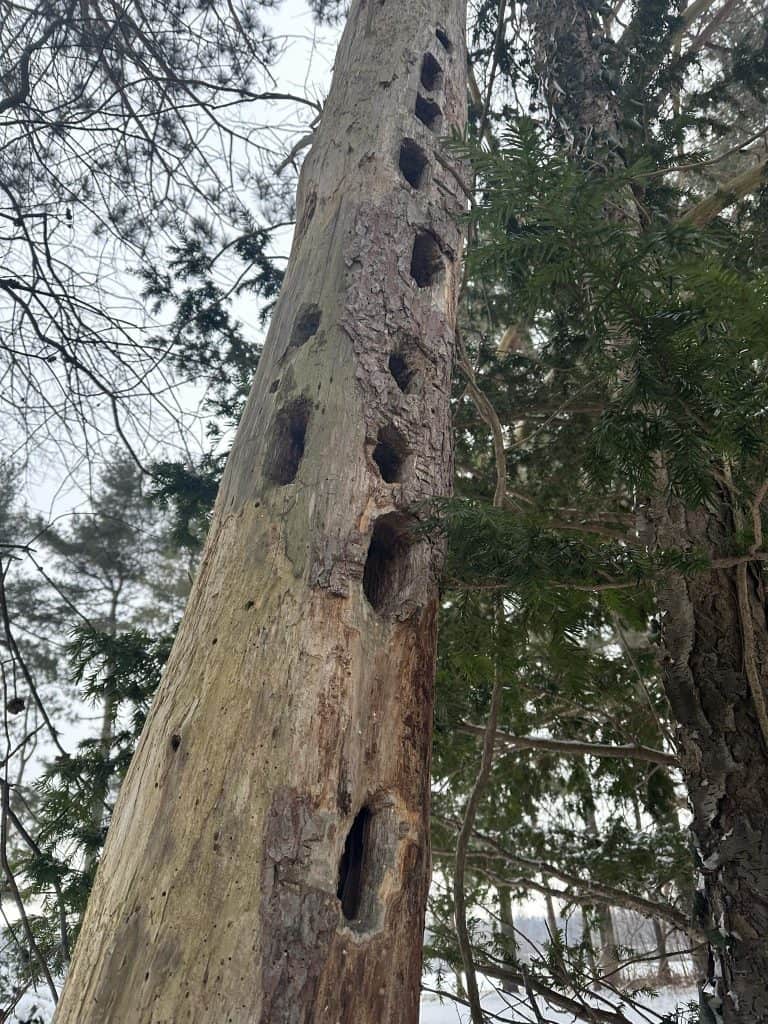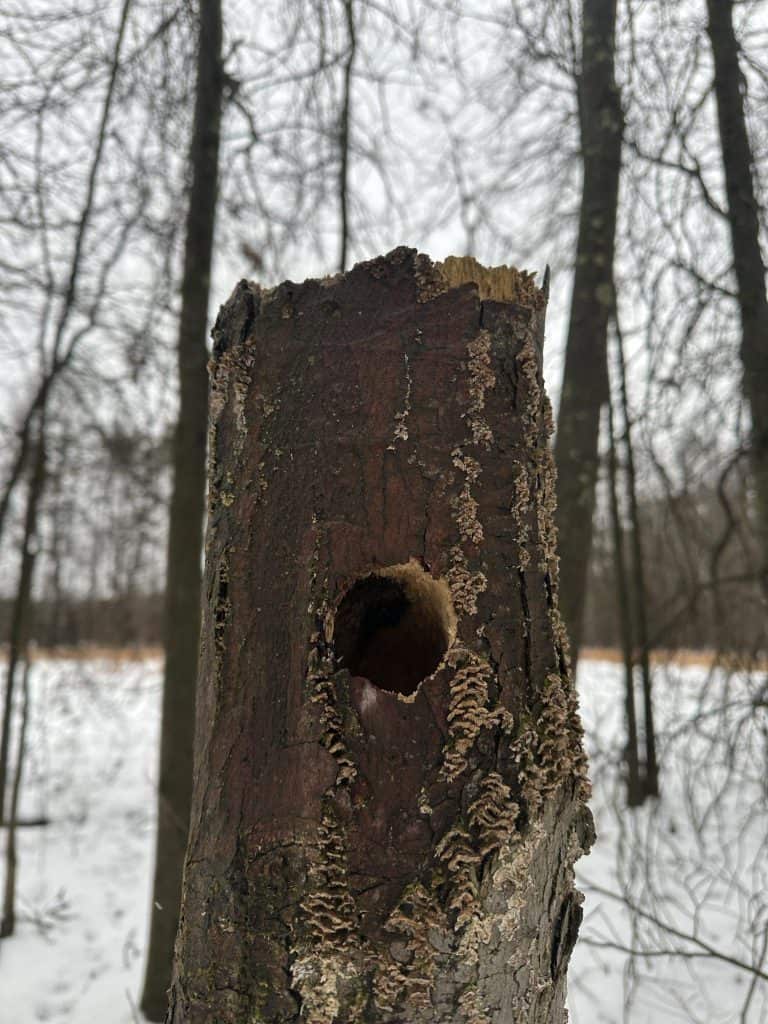A Peaceful Home for Birds: Our 10-Acre Backyard
When we moved onto our 10-acre property near Lake Erie in late 2020, one of the first things we noticed was the incredible variety of birds that have made this place their home. Falcons, Bald Eagles, Cardinals, and Woodpeckers are just a few of the many species that seem to thrive here, each bringing their own charm to the landscape.

The Old Pines and Their Feathered Residents
Among the trees in our woods, a few old pines still stand tall, their trunks weathered by time. One of these towering pines has become home to a falcon family, their nest carefully tucked away in the upper branches. In other pines, woodpeckers are a common sight, busily pecking away and filling the air with their rhythmic drumming.

Choosing to Let Nature Take Its Course
Early on, I made the choice to leave many of the dead standing trees on the property. These trees have naturally transformed into habitats, offering birds a safe place to build their nests. Some of these spaces have also been claimed by squirrels and chipmunks, who seem to find comfort in the shelter and foraging opportunities they provide. Toward the back of the property, an old black cherry tree stands with a large hollowed-out hole in its trunk. I have no idea what once lived there, but I decided it was best to leave it untouched and let nature take care of itself.
The Value of Dead Trees in Bird Habitats
Standing dead trees can provide a range of benefits for local wildlife. They offer birds and small mammals a place to nest, a reliable food source, and much-needed shelter. These trees support a delicate balance in the ecosystem, making them an essential part of the landscape.

A Diverse Range of Habitats
Living on this land has given me the opportunity to see how different bird species make use of the variety of trees here. The tall pine, oak, and maple trees provide safe nesting spots for birds like Yellow-rumped Warblers, who prefer the sturdy branches high in the canopy. Closer to the ground, the lower branches of oak and maple trees are home to Wood Thrushes, while shrubs and grasses offer protection for ground-nesting birds.
Cavity-Nesting Birds and Their Unique Needs
Some of the most fascinating residents on our property are cavity-nesting birds, such as woodpeckers, chickadees, nuthatches, and Eastern Bluebirds. These birds rely on standing dead trees to carve out their nesting sites and find food within the decaying bark. Ground-nesting birds like Eastern Towhees and Song Sparrows cleverly hide their nests in the tall grasses along the forest edge, while dense shrubs provide a safe refuge for species such as Common Yellowthroats.

Discovering the Work of Woodpeckers
One of the first things that caught my attention was an old pine tree with large holes in its trunk. After a bit of research, I learned these were likely the work of a woodpecker searching for insect larvae or excavating a nesting cavity. The size and shape of the holes pointed to a Pileated Woodpecker, with its bold red crest. Other species, like the Red-bellied and Hairy Woodpeckers, have also made their mark, showing just how vital these trees are to the ecosystem.
The Woodpeckers of Northern Ohio
Northern Ohio is home to several woodpecker species, each with their own characteristics. The Downy Woodpecker, often seen at feeders, is the smallest and most common. The Hairy Woodpecker, similar in appearance but larger, prefers mature forests. The Red-bellied Woodpecker, with its striking red cap and black-and-white barred back, visits frequently. The impressive Pileated Woodpecker stands out with its crow-sized frame and large rectangular holes. Other visitors include the Northern Flicker, known for its ground-foraging habits, and the vibrant Red-headed Woodpecker, which adds a splash of color to the trees. That bird certainly is a beautiful sight to behold!
Encouraging Bird Activity on the Property
Encouraging bird activity has become one of the most rewarding aspects of living here. Offering food sources such as suet cakes, unsalted peanuts, and sunflower seeds has attracted many species. Planting native trees and shrubs provides additional shelter and natural food sources, while maintaining natural standing dead trees ensures that birds have safe places to nest. I have also placed birdhouses around the property to support cavity-nesting birds when natural spaces are limited. Clean water sources, and small birdbaths, have helped birds stay year-round.

Learning Through Observation
Over time, I have become better at identifying different bird species by observing their nests and behaviors. Whether it’s spotting a woodpecker’s cavity high in the trees or discovering a carefully hidden sparrow nest in the underbrush, each encounter adds to my appreciation of the natural world.
Supporting Bird Conservation Through Small Actions
By planting native vegetation, preserving natural features, and providing food and water, I have found simple ways to support local birdlife. Nothing fancy and certainly nothing expensive. By choosing to let some dead trees just be in our woods because they’re already shelter and home to a variety of bird species I can nature just run its course. These efforts not only help maintain the delicate balance of our local ecosystem but also bring an added sense of connection to the land and the creatures that call it home.
Book Recommendations:
American Birding Association Field Guide to Birds of Ohio
